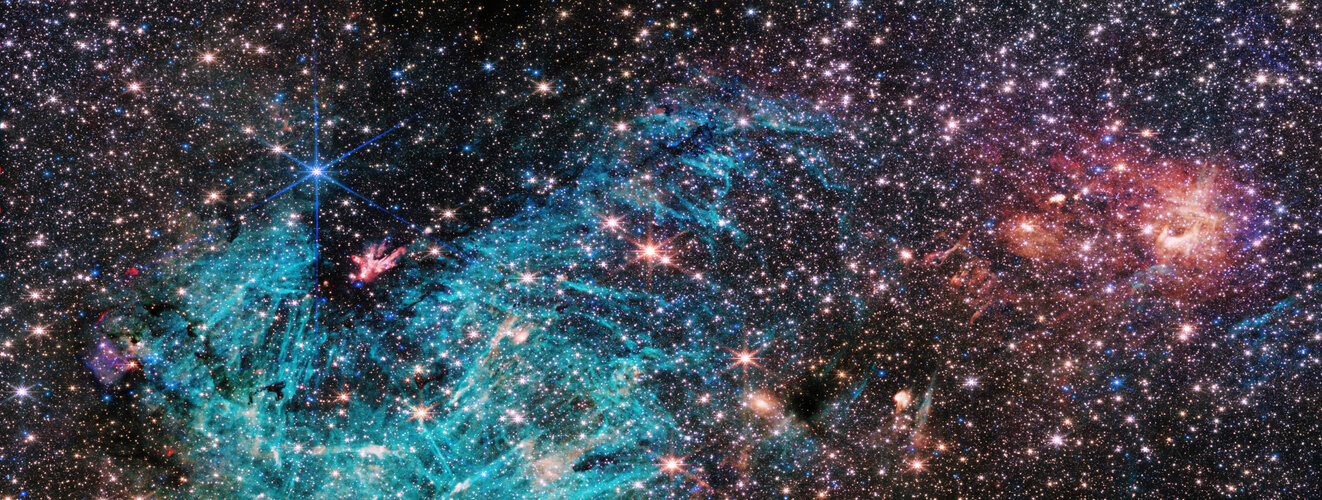Amid the estimated 500 000 stars in the image is a cluster of protostars – stars that are still forming and gaining mass – producing outflows that glow like a bonfire in the midst of an infrared-dark cloud. At the heart of this young cluster is a previously known, massive protostar over 30 times the mass of our Sun. The cloud the protostars are emerging from is so dense that the light from stars behind it cannot reach Webb, making it appear less crowded when in fact it is one of the most densely packed areas of the image. Smaller infrared-dark clouds dot the image, looking like holes in the starfield. That’s where future stars are forming.
Webb’s NIRCam (Near-Infrared Camera) instrument also captured large-scale emission from ionised hydrogen surrounding the lower side of the dark cloud, shown cyan-coloured in the image. Typically, this is the result of energetic photons being emitted by young massive stars, but the vast extent of the region shown by Webb is something of a surprise that bears further investigation. Another feature of the region that Crowe plans to examine further is the needle-like structures in the ionised hydrogen, which appear oriented chaotically in many directions.
Around 25 000 light-years from Earth, the galactic centre is close enough to study individual stars with the Webb telescope, allowing astronomers to gather unprecedented information on how stars form, and how this process may depend on the cosmic environment, especially compared to other regions of the galaxy. For example, are more massive stars formed in the centre of the Milky Way, as opposed to the edges of its spiral arms?



